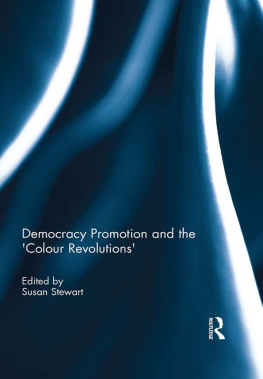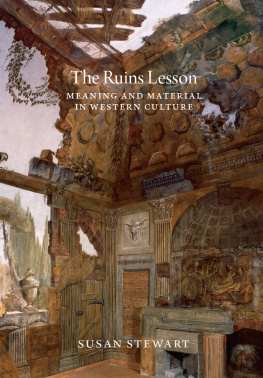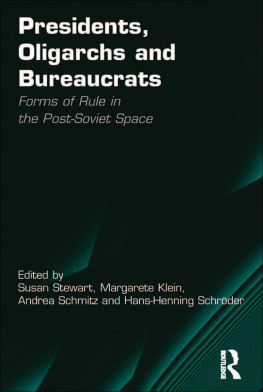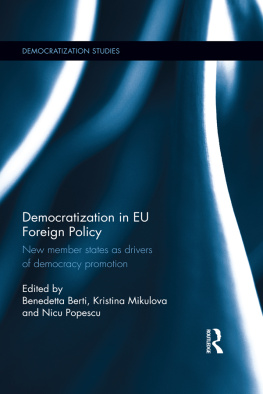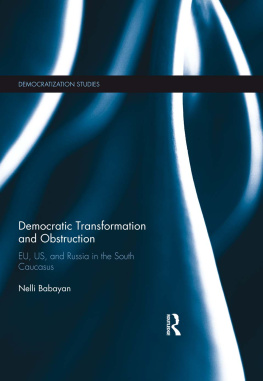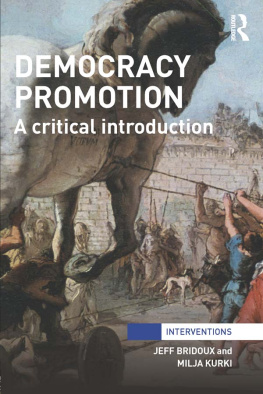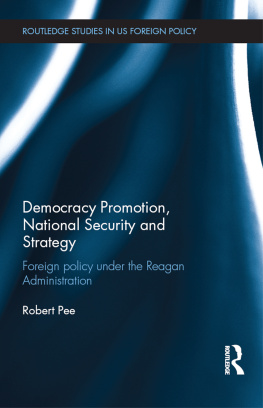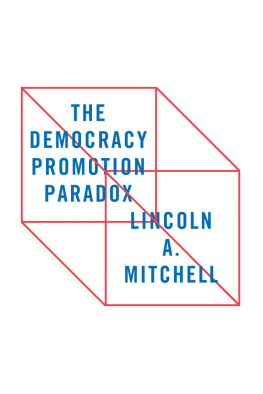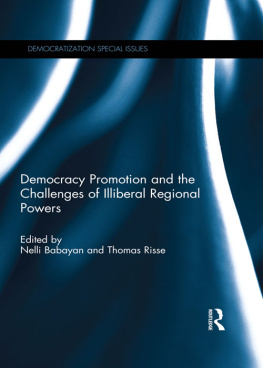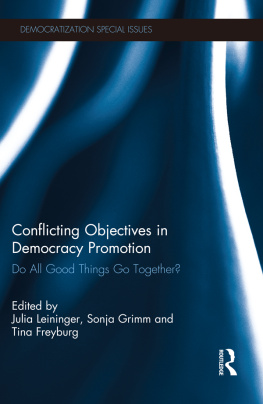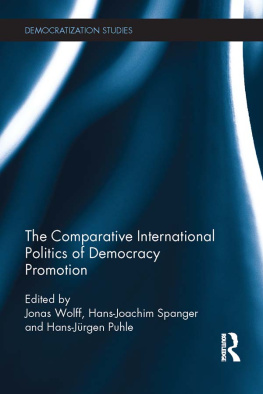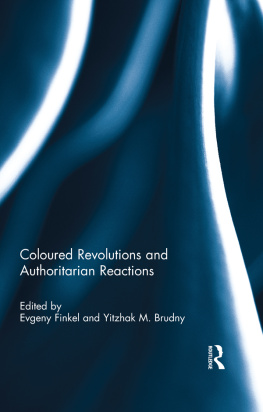Democracy Promotion and the Colour Revolutions
This book reviews the interplay between domestic contexts and democracy promotion efforts in selected countries of the former Soviet Union and the Western Balkans. The idea behind the six case studies is twofold. In the three cases where colour revolutions occurred (Serbia, Georgia, Ukraine), the authors explore the extent to which external democracy promoters adapted their strategies to respond to new domestic contexts. In the other three cases (Azerbaijan, Belarus, Russia) the authors investigate how the political leadership has reacted to colour revolutions elsewhere and which consequences their reactions have had for democracy promotion. In all cases an assessment of democratization processes in the country is provided as a basis for drawing conclusions about the potential for domestic and foreign actors to promote democratic development. An introduction and conclusion embed the case studies in the existing literature on democracy promotion and generalize the findings across the countries studied.
On the practical level, the volume offers suggestions for improving democracy promotion endeavours, proposing in particular a more balanced approach which goes beyond supporting specific individuals and organizations to include addressing the structural level.
This book was published as a special issue of Democratization.
Susan Stewart is a Senior Research Associate at the German Institute for International and Security Affairs in Berlin. She specializes on EU-Russia relations and the foreign and domestic policy of Ukraine. From 1995 to 2007 she was engaged in research and teaching at the University of Mannheim, Germany.
Democracy Promotion and the Colour Revolutions
Edited by
Susan Stewart
First published 2012
by Routledge
2 Park Square, Milton Park, Abingdon, Oxon, OX14 4RN
Simultaneously published in the USA and Canada
by Routledge
711 Third Avenue, New York, NY 10017
Routledge is an imprint of the Taylor & Francis Group, an informa business
2012 Taylor & Francis
This book is a reproduction of Democratization, vol. 16, issue 4. The Publisher requests to those authors who may be citing this book to state, also, the bibliographical details of the special issue on which the book was based.
All rights reserved. No part of this book may be reprinted or reproduced or utilised in any form or by any electronic, mechanical, or other means, now known or hereafter invented, including photocopying and recording, or in any information storage or retrieval system, without permission in writing from the publishers.
Trademark notice: Product or corporate names may be trademarks or registered trademarks, and are used only for identification and explanation without intent to infringe.
British Library Cataloguing in Publication Data
A catalogue record for this book is available from the British Library
ISBN13: 978-0-415-68968-7
Typeset in Times New Roman
by Taylor & Francis Books
Publisher's Note
The publisher would like to make readers aware that the chapters in this book may be referred to as articles as they are identical to the articles published in the special issue. The publisher accepts responsibility for any inconsistencies that may have arisen in the course of preparing this volume for print.
Contents
Susan Stewart
Aaron Presnall
Marina Muskhelishvili and Gia Jorjoliani
Iryna Solonenko
Sinikukka Saari
David R. Marples
Aytan Gahramanova
Susan Stewart
Susan Stewart
Susan Stewart
Stiftung Wissenschaft und Politik, Berlin, Germany
The term colour revolution has come to be associated with a series of events in the 1990s and 2000s which occurred in a number of Eastern European countries and post-Soviet republics. These events were characterized by mass popular uprisings which led to the non-violent toppling of the incumbent regime and its replacement with one with ostensibly closer ties to the populace. As Joshua Tucker has pointed out, the term colour revolutions
has become a popular shorthand for referring to the events in these countries among regional specialists and local politicians. The use of the word revolution is not meant to imply any long-term consequences of these events, but rather to identify that the anti-regime forces were in fact successful in overthrowing the current regime.1
For this reason, and also due to the non-violent nature of the process, the word revolution is often placed in quotation marks, a practice we follow in this introduction as well. Some scholars, most notably Valerie Bunce and Sharon Wolchik (2006), prefer the term electoral revolutions, which emphasizes the fact that the mass uprisings tended to follow starkly manipulated elections. We opt here for the more frequently utilized colour revolutions, even though the case of Serbia, analysed in this special issue, does not technically fit the mould due to its epithet of bulldozer revolution.2
While the three clearest examples of the phenomenon described above are arguably Serbia, Georgia, and Ukraine, some analysts include the earlier cases of the Romanian overthrow of the Ceauscescu regime and the ousting of Vladimir Meciar in Slovakia. Yet others extend the series to encompass the events in Kyrgyzstan in 2005, although the extent to which these led to a genuine regime change has been questioned. In all of these examples there is some evidence of involvement by external actors, but the degree and impact of their engagement vary widely.3 Furthermore, the colour revolutions have had various spillover effects beyond the borders of the countries in which they occurred. In the first place, experiences from the earlier ones were transferred to the later contexts, which have been examined in the scholarly literature as an example of democratic diffusion processes.4 In the second place, other countries in the area most notably Russia, but also Belarus and Azerbaijan have reacted against the revolutions in a variety of ways, some of which are explored in this special issue.
The idea for this special issue emerged out of two workshops held at the University of Mannheim (Germany) in the spring of 2007. The original concept involved focusing primarily on the role of external actors in two sets of countries. The first set consisted of countries which had experienced colour or electoral revolutions. The second set involved countries which were considered potential candidates for such revolutions and/or had drawn conclusions from these events which influenced their own domestic and foreign policies. In the domestic policy sphere, there was usually a consequential, more repressive treatment of opposition parties and civil society organizations. In relation to foreign policy, governments of the countries which had not (yet) experienced colour revolutions tended to make strong accusations that illegitimate influence on domestic developments in the revolutionary countries had been exercised by some external actors.5
The goal of the project leading to this special issue was to bring together western scholars involved in desk and field research on these countries with both academics and practitioners from the countries themselves. This latter group had experienced not only the revolutions personally, but the before and after contexts as well, and thus brought a different perspective to bear on the role of external actors in the various countries.

